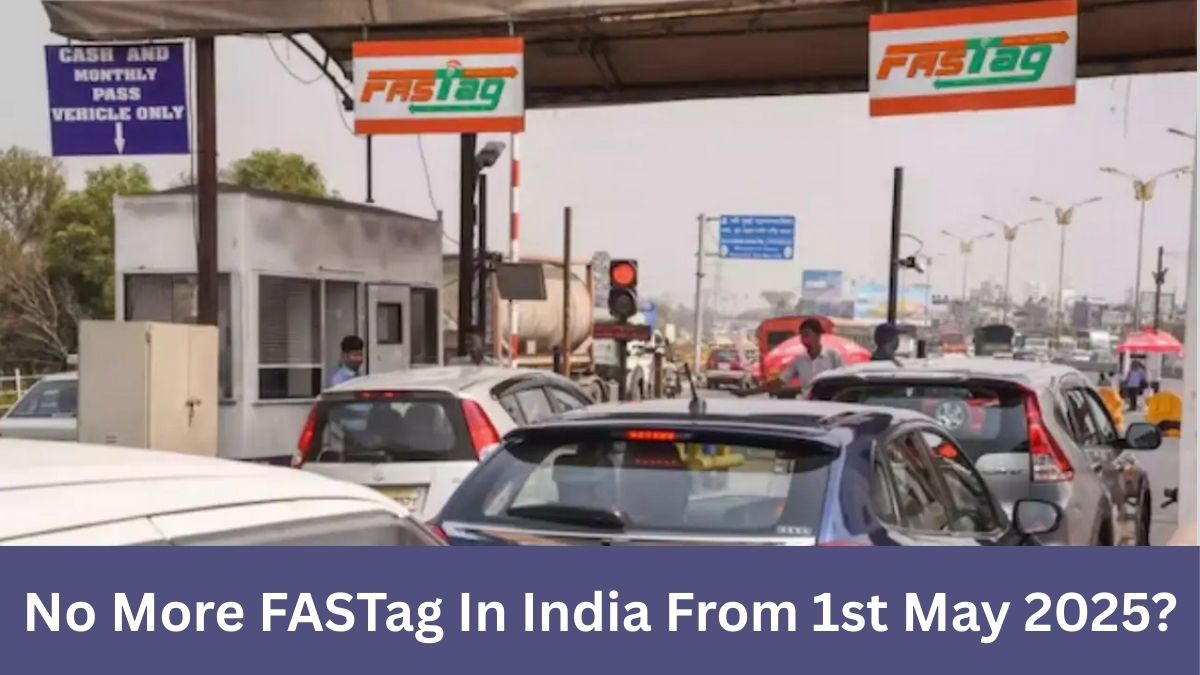India is preparing to take a significant leap in its highway infrastructure by replacing the current FASTag-based toll collection method with a new GPS-powered system. From May 1, 2025, the Global Navigation Satellite System (GNSS) is expected to go live, eliminating the need for vehicles to stop at toll booths and ushering in a seamless, fully automated tolling experience.
The upcoming technology aims to solve the persistent issues of traffic congestion and toll gate queues, especially during holidays or rush hours. This shift represents a larger move towards intelligent transportation systems and digital governance in India’s infrastructure landscape.

Why FASTag Is No Longer Enough
FASTag, introduced as a faster alternative to manual toll collection, has played a significant role in reducing waiting times at toll plazas. Using Radio Frequency Identification (RFID), it enables automatic toll deduction from prepaid wallets when vehicles pass through dedicated lanes.
However, despite its relative efficiency, FASTag still has limitations:
-
Vehicles must slow down or stop at physical toll booths.
-
Traffic bottlenecks still occur during peak hours or in high-density areas.
-
Infrastructure costs remain high due to the need for toll plazas and manpower.
These challenges have prompted the government to explore a more efficient, tech-driven solution—enter GNSS-based tolling.
What Is GNSS and How Will It Work?
The Global Navigation Satellite System (GNSS) is a satellite-based tolling technology that uses GPS tracking to monitor vehicle movement and calculate toll charges based on the exact distance traveled on tolled highways.
Here’s how it works:
-
Vehicles will be fitted with an onboard GNSS device.
-
As the vehicle moves along a tolled national highway, its location is continuously tracked via satellite.
-
The distance covered is automatically calculated, and toll fees are deducted directly from the driver’s linked bank account or wallet—no stopping, no scanning.
According to Union Minister for Road Transport and Highways, Nitin Gadkari, this system will not only reduce travel time but also enhance transparency and cost-efficiency in toll collection. Speaking at a recent event, he said, “We are starting a satellite toll system so that you don’t have to stop at toll plazas… you will be satisfied with our upcoming toll policy.”
GNSS vs. FASTag: What’s the Real Difference?
While both systems aim to simplify toll collection, their core functionality is fundamentally different:
-
FASTag is location-specific. You pay a fixed amount every time you cross a toll gate, regardless of how far you actually travel on that highway stretch.
-
GNSS, on the other hand, is distance-based. The longer you drive on a tolled road, the more you pay—making it a fairer and more dynamic tolling mechanism.
This eliminates the need for static toll plazas and enables what are called “virtual toll booths.” These booths don’t exist physically but operate through cloud systems and satellite tracking, automatically identifying vehicles entering and exiting tolled zones.
Benefits of GPS-Based Tolling for Commuters and the Economy
The GNSS system is expected to offer multiple advantages over the current FASTag model:
-
Time-Saving: With no need to stop or slow down, average commute times are expected to reduce significantly.
-
Fuel Efficiency: Less idling and braking means better fuel economy and lower emissions.
-
Fair Tolling: Users only pay for the exact distance traveled, leading to a more equitable payment model.
-
Reduced Operational Costs: No need for toll plaza construction, maintenance, or staffing.
-
Scalability: Virtual tolling can be quickly expanded to cover new routes without large infrastructure investments.
What Road Users Should Expect Starting May 1, 2025
While the GNSS rollout was initially expected in April, slight delays have pushed the launch date to May 1, 2025. Once implemented, commuters may need to install GNSS-compatible devices in their vehicles, especially commercial and long-haul transporters.
The transition is expected to be phased. FASTag may continue temporarily in certain areas until GNSS becomes fully functional nationwide. Eventually, however, FASTag lanes and infrastructure will be phased out entirely.
Steps for a Smooth Transition
Here’s how you can prepare for the change:
-
Keep an eye out for official government announcements regarding device installation.
-
Ensure your vehicle’s bank account or wallet is linked for automatic toll deduction.
-
Understand the new tolling format—distance-based, not entry/exit-point based.
-
If you’re a fleet operator, plan ahead to upgrade all vehicles for compliance.
Frequently Asked Questions
Q1. Is FASTag being discontinued completely?
Yes, over time. FASTag will be gradually phased out as GNSS takes over, but there might be a transition period where both systems run simultaneously.
Q2. Do I need to install a new device for GNSS tolling?
Yes. Vehicles will need to be fitted with a GNSS-compatible device that enables satellite tracking.
Q3. How will toll charges be calculated in the GNSS system?
Charges will be based on the actual kilometers traveled on toll highways, not on fixed entry or exit points.
Q4. What are the benefits of switching to GNSS over FASTag?
GNSS offers seamless, stop-free tolling, accurate distance-based charges, reduced congestion, and lower maintenance costs.
Q5. When will the GNSS toll system officially start in India?
The rollout is currently scheduled to begin on May 1, 2025, following a delay from the earlier proposed April date.
Click here to know more.
Kishan is a knowledgeable writer specializing in agriculture and the latest government job recruitments, delivering clear and insightful content to inform and empower readers.
